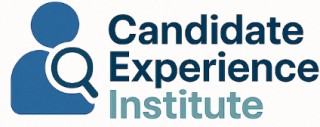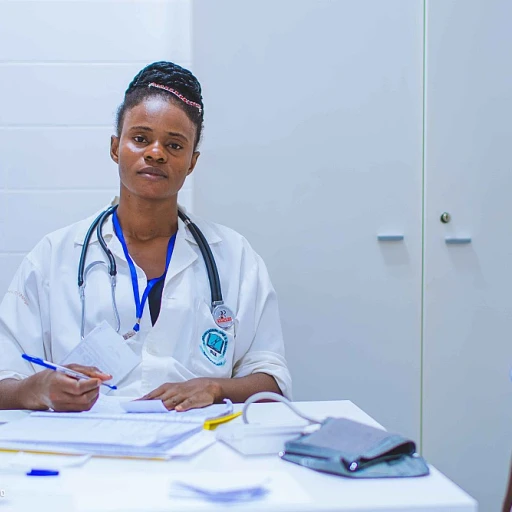Understanding the Candidate Experience
The Importance of a Positive Candidate Experience
Understanding the candidate experience is crucial in any recruitment process, as it serves as a potential employee's first impression of a company. A positive candidate experience can significantly influence an individual's decision to join an organization and their engagement level once they become employees.
For companies striving to attract and retain top talent, ensuring a seamless candidate experience is essential. This involves treating candidates with respect, providing timely and constructive feedback, and offering clarity on the overall recruitment process.
Moreover, the candidate experience doesn't end once a job offer is made. Transitioning candidates into successful employees requires an ongoing commitment to their development and performance. Companies can benefit from understanding the critical role that performance improvement plans (PIPs), specific action plans, and regular performance reviews play within this context.
A comprehensive approach to the candidate experience can include specific and measurable development goals to provide new hires with a clear path to success. Establishing a solid framework for employee progress from the outset helps create a supportive environment for new employees, which, in turn, boosts morale and performance. Read more about crafting effective development goals and their impact on candidate experience
here.
The Importance of Performance Improvement Plans in Candidate Experience
Performance improvement plans (PIPs) hold a crucial role in the realm of candidate experience. Primarily designed to address performance issues, a well-structured PIP helps an employee identify specific areas of improvement. This clear action plan assists employees in setting specific goals and understanding the steps they need to undertake to improve performance.
A thoughtfully crafted PIP serves not only to provide feedback on employee performance, but also to offer the necessary support and resources. This ensures the employee is equipped to meet the defined goals, ultimately pushing their progress in a measurable timeframe.
Integrating a performance improvement plan into the candidate experience process can significantly enhance the employee's journey. By ensuring regular check-ins and providing timely support, the PIP process can effectively help employees identify areas of improvement. This step is crucial to improve employee performance, as it fosters an environment where employees feel supported rather than scrutinized.
A key element of a successful PIP is its capacity to improve employee performance through frequent and constructive feedback. By allowing for clear communication between the employee and management, the improvement plan becomes instrumental in building trust, thereby improving the overall candidate experience.
To delve deeper, take a look at
enhancing candidate experience by tracking design process phases in a ticketing form for further insights into integrating processes effectively.
Integrating PIP Training into Candidate Experience
Integrating Performance Improvement Plan (PIP) Training with Strategic Implementation
Enhancing candidate experience through well-integrated Performance Improvement Plans (PIPs) can significantly elevate employee performance within an organization. A comprehensive and effective PIP training program aims to provide employees clear guidance, helping them meet specific goals while addressing any performance issues constructively.
The integration of PIP training should begin at the core of performance management. It's important to establish a process that includes actionable feedback and regular check-ins. Providing employees with continuous support will help them progress at a steady pace, ensuring their development aligns with organizational objectives.
A PIP process that ensures clarity in expectations will help employees understand the areas in need of improvement. Regular check-ins and feedback sessions create a supportive environment, allowing employees to improve performance effectively. It is crucial to remember that the primary goal is to help employee progress, not merely to penalize shortcomings.
Through specific action plans, employees are empowered to take charge of their improvement journey. This, in turn, helps in developing a culture of continuous learning and advancement for both employees and the organization as a whole.
For more insights into enhancing candidate experience, you might want to explore
enhancing candidate experience with effective performance review templates for a deeper understanding of how these elements can be utilized effectively.
Challenges in Implementing PIP Training
Overcoming Hurdles in PIP Training Implementation
Implementing Performance Improvement Plan (PIP) training within the candidate experience framework presents its own set of challenges. Recognizing and addressing these hurdles is essential for ensuring that the training process does indeed lead to tangible improvement in employee performance.
First, clarity and communication can be significant barriers. Employees must be provided with a clear understanding of what the PIP process entails, including the specific performance issues being addressed, the goals of the improvement plan, and the timeline for expected improvements. Without this clarity, employees may struggle to grasp the relevance and importance of the training.
Moreover, the effectiveness of PIP training heavily relies on the support provided by managers. Managers need to engage in regular check-ins to offer feedback, monitor employee progress, and adjust action plans as needed. However, this requires time and commitment, which can overwhelm managers juggling multiple responsibilities.
Another challenge is ensuring consistency in how PIPs are implemented across different departments and teams. Inconsistent application of improvement plans can lead to perceptions of unfairness, reducing the overall effectiveness of the performance management process.
Resistance to training is another issue. Employees may feel apprehensive about being placed on a PIP, perceiving it as an indicator of job insecurity. It is crucial to foster a proactive culture where PIPs are seen as a supportive tool to help employees grow and achieve their potential, rather than a punitive measure.
Lastly, the integration of performance improvement within the broader candidate experience strategy can pose difficulties. While PIPs focus on individual employee progress, they should also align with overarching organizational goals and strategies to enhance overall performance.
Addressing these challenges involves a multifaceted approach, including clear communication, dedicated managerial support, consistent application of PIPs, and fostering a supportive organizational culture. By overcoming these hurdles, organizations can ensure that PIP training becomes an effective part of the performance improvement landscape.
Best Practices for PIP Training
Optimizing Training for Effective PIPs
Implementing a well-structured training program is essential in optimizing Performance Improvement Plans (PIPs) within an organization. To achieve this, several best practices can be employed to enhance the overall candidate experience and employee performance management.
- Define Clear Goals: Begin by establishing clear, specific, and achievable goals that will guide the PIP process. This helps employees understand the expectations and align their actions with the desired outcomes. Clarity in goals also reduces confusion and sets a clear path for improvement.
- Regular Check-ins and Feedback: Conducting regular check-ins with employees is vital. These sessions provide an opportunity to discuss progress, address performance issues, and make necessary adjustments to the action plan. Consistent feedback helps employees to improve performance and boosts their confidence.
- Provide Support and Resources: Employees undergoing a PIP should receive the necessary support and resources to succeed. This could include access to training programs, mentorship, or tools that facilitate their progress. Providing a supportive environment demonstrates a commitment to helping employees improve.
- Tailored PIPs: Personalize improvement plans for each employee to address their unique areas of improvement. A tailored approach ensures that employees receive relevant support, making the PIP process more effective and efficient.
- Open Communication Channels: Maintain open and transparent communication between managers and employees. This promotes trust and encourages employees to voice concerns or challenges they may face during the improvement plan.
- Monitor Employee Progress: Regularly monitor the progress of employees to assess the effectiveness of the PIP. This involves setting up performance metrics and evaluating whether the specific goals are being met. Adjust plans as needed based on this ongoing assessment.
Implementing these best practices helps employees through the PIP process, which, ultimately, can lead to improved performance and a more positive candidate experience. When employees feel supported and understand their role in the improvement plan, the likelihood of achieving their goals increases, benefiting both the individual and the organization.
Measuring Success in Candidate Experience
Evaluating the Impact of PIP Training on Candidate Experience
Measuring success in Candidate Experience after implementing Performance Improvement Plan (PIP) training hinges on a comprehensive assessment framework. Ensuring that PIPs are well-integrated into the broader performance management strategy demands careful monitoring and evaluation.
Leveraging key performance indicators (KPIs) is essential to track the progress of employees under PIP. These metrics might include employee performance scores, team productivity levels, and feedback from supervisors. By focusing on specific areas of improvement highlighted in the plan, organizations can better gauge how the PIP process is enhancing employee performance over time.
Regular check-ins provide another critical layer of support, facilitating open communication between the employee and their supervisor. These sessions not only offer an opportunity for feedback but help employees align their goals with the company's objectives. Regularity ensures that any performance issues are addressed promptly, thereby improving the likelihood of achieving the set targets.
Moreover, success should also be measured by the clarity and effectiveness of the PIP action plan itself. Ensuring that expectations and goals are communicated clearly to employees can significantly improve performance. This includes providing the necessary support and resources to help employees accomplish their objectives.
Employee progress should be tracked meticulously. By maintaining a dynamic feedback loop, organizations can modify their strategies and provide targeted support where necessary. This responsiveness is a core element of continuous improvement, essential for the overall success of the PIP process.
Ultimately, a successful PIP training program should not only resolve performance issues but also enhance the candidate experience. By fostering an environment that supports growth and clarity, organizations will improve both employee retention and satisfaction, marking a triumph in candidate experience.













